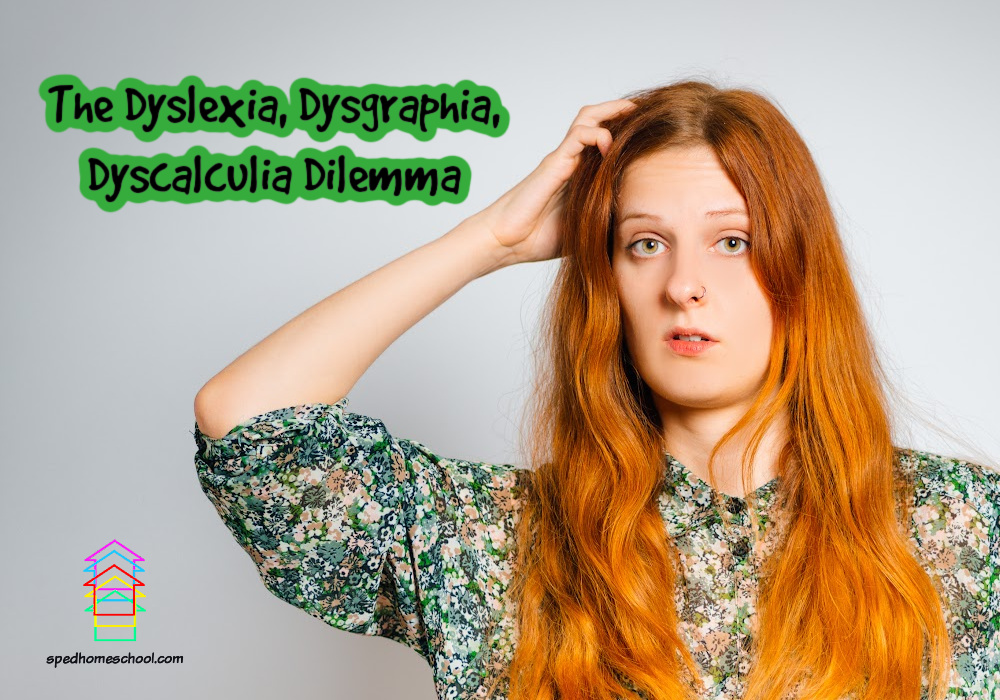
By Jan Bedell, Ph.D., Master NeuroDevelopmentalist,SPED Homeschool Board Member, Curriculum Partner, Consultant Partner, and Therapy Partner
Dys, dys, dys what is a mom to do? I just had a child in my office this week with all three labels and they added Auditory Processing Disorder on top of all the ”dys.” This mom, like many of you, wanted the child tested and even labeled so he could get some help. What she received was far from what she hoped. Instead, she received a lot of labels, some vague, general recommendations to remediate his work and ways he might cope and compensate for these conditions for the rest of his life. NeuroDevelopment offers a unique perspective. The goal of neurodevelopment is to find the root cause of each of the symptoms that show up on the test for these labels and to equip the parent with activities that work on that root cause to decrease or eliminate it. For a better understanding of this perspective, I encourage you to watch a video entitled: To Label or Not to Label.
For now, let’s delve into the “dys” labels.
When you look up the meaning of the prefix, dys you find: “bad”, “abnormal”, “difficult”, “hard”, “imperfect” or “impaired.”
Adding “lexia” (meaning – readable [to choose words; to gather, to collect; to pick out, to choose; to read, to recite]) to “dys” results in dyslexia.
Adding “calculia” (meaning-learning related to numbers and mathematics) to “dys”results in dyscalculia.
Finally, adding “graphy” (meaning-form of drawing, writing, representing, recording, describing, etc) to “dys” results in dysgraphia.
Mostly, children with typical or above average to even gifted intelligence are labeled with these “dys” labels. Some sources even admit that these reading, math, or writing challenges are totally unexpected in these bright children. In fact, one very sad result of these labeled difficulties is that these children often feel they are not very smart, even though they may have a very high IQ. Plus, their parents don’t know how to explain the disconnect between their intelligence and learning struggles.
The traditional approach for remediating these “dys” issues focus attention on the difficulty, the abnormal struggle, and the impaired ability to do typical academic tasks. Unfortunately, this approach also blinds us to the solutions.
Do this experiment for me – put the palm of your hand against your nose with fingers fanned out. Now, look at a scene outside your window. Is your view of the scene distorted? Now straighten your arm in front of you, parallel to the floor, and look at the scene again. Your hand is still there in your peripheral vision but it is not skewing your perspective of the scene. That is how I encourage you to look at these labels. They don’t need to be a daily topic or excuse for not being able to get school work finished. They can simply be an awareness (your hand in the peripheral position) that there are inefficiencies happening in the brain that can be addressed at the root to make function easier. I like to tell the children that they are really smart but their brain is tricking them right now so it is harder for all the smart to come out easily.
Let me illustrate this with a dysgraphia label. One boy with this label as well as a 130 IQ described it like this: “My hands feel fluffy.” Now think about it, if you had fluff at the end of your arms would you be able to control a pencil? NO! In this child’s brilliance he was describing an immature pathway from his brain to his hand that was not allowing him to control his fingers to form the letters like his teacher wanted. This caused frustration on all sides of the issue. You could put this child in handwriting classes for hours a day and this difficulty is not going to change until the underlying issue of the brain pathway is addressed. Of course this is only one possible root cause of the many that could get a child that label but I hope you can see the point. In my daughter’s case, she had so much trouble writing legible and on the line that in addition to the poor brain pathway to her hand, her central detail vision wasn’t working well. This meant that she couldn’t even see all of the lines she was supposed to write on. These were developmental issues that were addressed with neurodevelopmental activities that stimulate the brain in these areas. Improvement was then made.
As for dysgraphia, there are many possible root causes for the symptoms for that diagnosis. A few of these root causes could be the inability to hold information in short-term memory in order to see the big picture or poor long-term memory storage which makes fact retrieval difficult.
I have listed many symptoms of dyslexia’s root causes in this document to give you a better idea of the neurodevelopmental perspective on dyslexia. It is “the hand in the scene but not in your face” perspective that should help you know how to homeschool a child with these labels.
If you are looking for more information, visit the Brain Coach Tips YouTube channel or www.BrainSprints.com to get more information on how The NeuroDevelopmental Approach can help you see more solutions for learning struggles.

